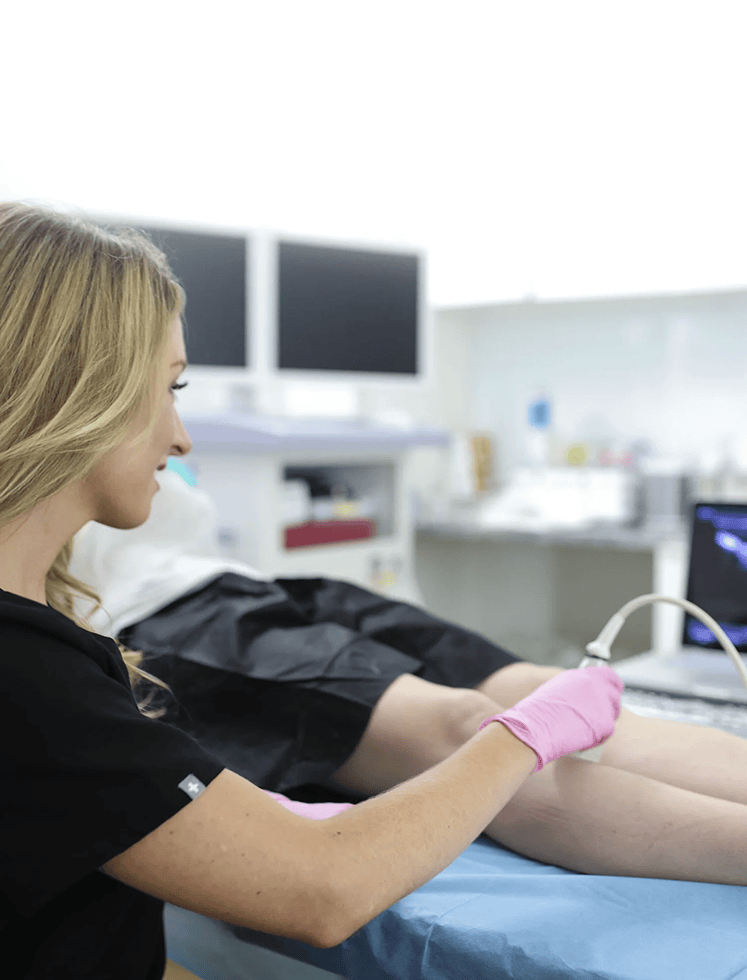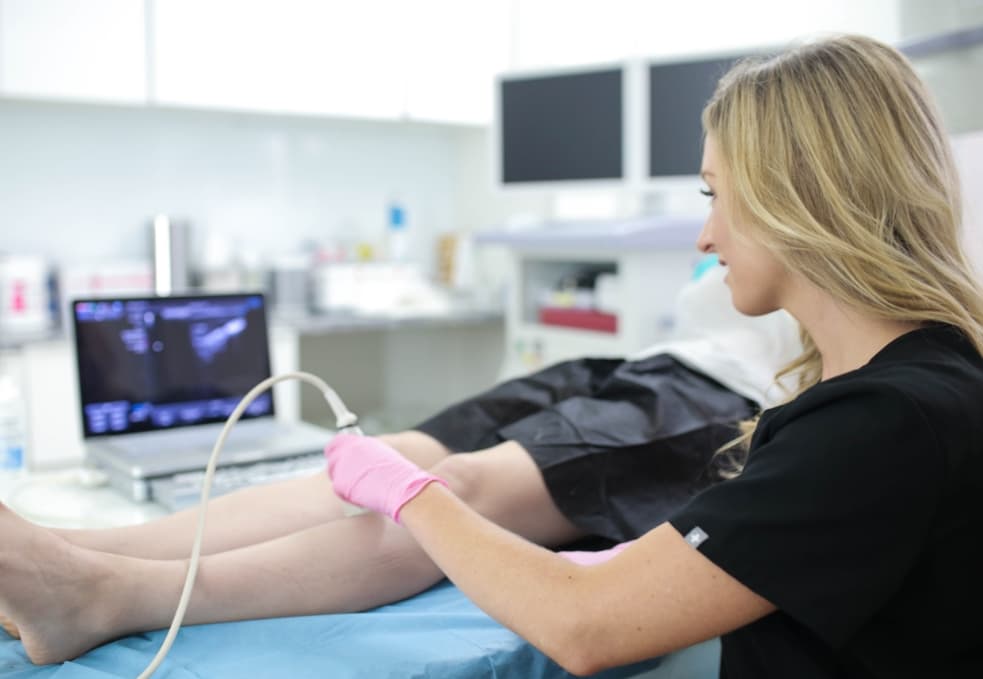If you are experiencing spider veins or varicose veins, Maryland Vein Center can help you. Our board-certified vein doctors specialize in minimally invasive treatments such as sclerotherapy, endovenous laser ablation, radiofrequency ablation, VenaSeal, ClariVein, and ambulatory phlebectomy. Before curating a personalized treatment plan, we always diagnose the root cause of your spider veins and varicose veins via vascular imaging and duplex ultrasound.
One of the most important parts of the diagnostic process is vein mapping, which involves using sound waves to identify vein disease and create a map of your veins. In this article, we will discuss how long a vein mapping takes and what to expect during the procedure.
What is Vein Mapping Ultrasound?
Vein mapping ultrasound is a non-invasive diagnostic technique that uses high-frequency sound waves to produce images of the veins in your legs. The sound waves are transmitted through your skin and reflected back by the veins, creating a detailed map of your vein anatomy. This imaging technique helps our vein specialists identify any abnormalities in your veins, including blockages or valves that are not functioning properly. By visualizing the location and severity of vein disease, vein mapping ultrasound allows us to develop a personalized treatment plan to address your specific needs.
How Long Does a Vein Mapping Take?
Vein mapping ultrasound is a safe and efficient procedure that provides our vein specialists with a detailed image of your veins, allowing them to identify any abnormalities and develop an effective treatment plan. The procedure usually takes around 30 minutes to complete, but may take longer for individuals with complex vein systems or severe vein disease. The length of the procedure may also depend on factors such as the size and depth of the veins being examined, as well as the experience of the technician performing the ultrasound.
What to Expect During the Vein Mapping Procedure?
Before the vein mapping procedure, it is important to wear loose-fitting clothing that can be easily removed or pulled up to expose your legs. This allows the technician to access the entire leg area without any restriction. You may also be asked to avoid applying lotion or other substances to your legs before the procedure, as these can interfere with the sound waves used during the procedure.
During the procedure, you will lie down on a table, and a technician will apply a gel to your legs. This gel helps the ultrasound probe glide over your skin and transmit sound waves to your veins. The technician will use a handheld ultrasound probe to scan your legs and create a map of your veins. As the ultrasound probe moves over your skin, you may feel some pressure or mild discomfort, but the procedure should not be painful. The technician may need to apply some additional pressure to obtain a clear image of your veins, but this should not cause any significant discomfort.
The vein mapping ultrasound is a non-invasive procedure, meaning that there is no need for any incisions or injections. This procedure does not use ionizing radiation and is safe for most individuals. After the procedure, you will be able to resume your normal activities immediately. The ultrasound gel can be easily wiped off with a towel, and there is no downtime required. The images obtained during the vein mapping procedure will be used to develop a personalized treatment plan that addresses any underlying vein disease.
Why is Vein Mapping Important?
Vein mapping is an important diagnostic tool for the treatment of spider veins and varicose veins. This procedure helps our vein specialists to identify the location and severity of vein disease in your legs, allowing us to create a personalized treatment plan that is tailored to your specific needs. By visualizing your vein anatomy, we can determine the best course of action to address your underlying vein disease.
In addition to identifying visible veins, vein mapping allows us to detect hidden veins that may be contributing to your vein disease. Sometimes, vein disease can occur in deeper veins that are not visible on the surface. By mapping out your entire venous system, we can ensure that we treat all of the affected veins, not just the visible ones.
What Happens After Vein Mapping?
Once we have completed the vein mapping procedure, we will review the images to identify any areas of concern. Our vein specialists will then use these images to develop a personalized treatment plan that addresses your specific needs.
In most cases, minimally invasive treatments such as endovenous laser ablation, radiofrequency ablation, or sclerotherapy can effectively treat spider veins and varicose veins. These procedures use advanced techniques to close off damaged veins and redirect blood flow to healthier veins. They are minimally invasive and usually require only local anesthesia, meaning that you can return to your normal activities shortly after the procedure.
At Maryland Vein Center, we are committed to providing our patients with the highest quality care possible. We use state-of-the-art technology and the latest minimally invasive techniques to ensure the best possible outcomes for our patients. Our board-certified vein specialists have years of experience diagnosing and treating vein disease, and we are dedicated to helping you achieve healthy legs.
Schedule a Vein Screening Today
If you are experiencing spider veins or varicose veins, Maryland Vein Center can help. We offer free insurance verification even before the first appointment, so you can have peace of mind knowing that you are covered. Our vein specialists use the latest minimally invasive treatments to ensure the best possible results.
To schedule a vein screening or to learn more about our treatment options, please contact us today. Maryland Vein Center is conveniently located at 10215 Fernwood Rd, Suite 301, Bethesda, Maryland, just outside of Washington, DC in Silver Spring, Maryland. Our state-of-the-art facility is equipped with the latest technology and staffed by experienced vein specialists who are dedicated to providing our patients with the highest quality care.





